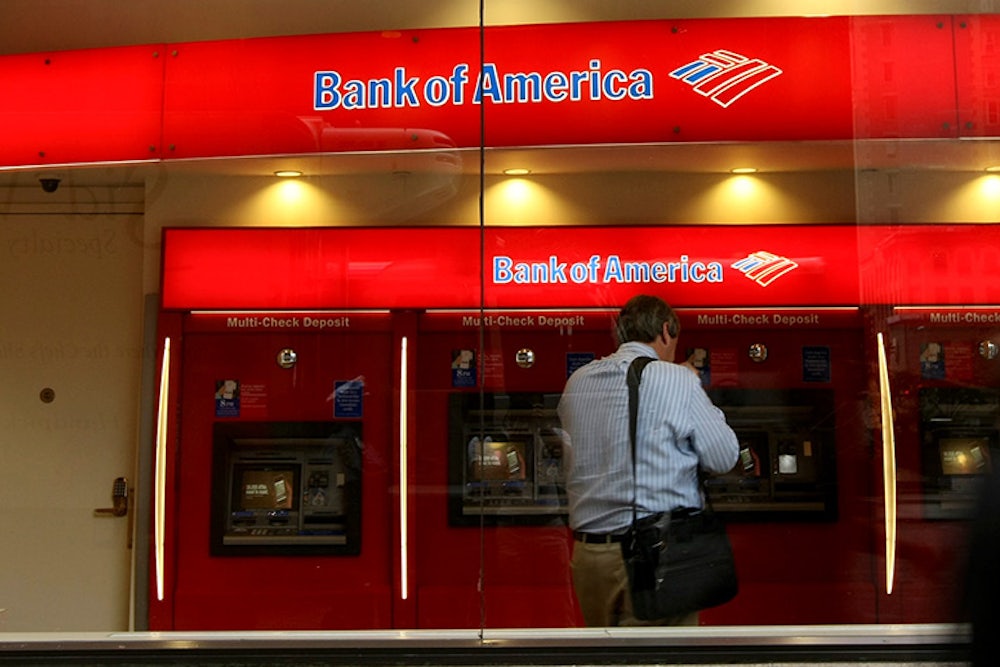Officials at the Federal Reserve released a new requirement for banks to hold more capital this week. From the headlines and coverage, you’d think the regulators punished the beleaguered financial industry with serious reform. The banks “just can’t catch a break” according to Marketwatch. “Steep Leverage Ratio Requirements Will Force Banks To Rethink Their Capital Plans” warned Fortune.
Though a step in the right direction, we should be careful about taking a victory lap or declaring Mission Accomplished when it comes to these capital rules. The new rule, while important, isn’t where it needs to be in order to work properly. And there are still two major battles coming up this year when it comes to capital requirements, which is the amount of money regulators require a bank to hold. These battles will prove equally consequential, and ultimately determine whether or not the problem of Too Big To Fail is fixed.
The rules in question are designed to get banks to fund themselves with safer equity instead of risky debt. Capital requirements are an excellent regulatory tool because they strengthen a whole set of public policy objectives. As is commonly discussed, they make firms less likely to fail. But they also mean an easier landing when failure happens, giving regulators working capital to help keep a failing firm from causing a market wide panic.
And they can be finely targeted to increase the regulatory scrutiny on larger, more complex firms. Conservatives argue that Dodd-Frank is onerous for small banks while letting the larger firms off the hook. The American Enterprise Institute’s James Pethokoukis describes Dodd-Frank as “the mother of cronyist laws” for this reason. But the new capital requirements are tougher for larger firms, and the Fed’s new rule continues this trend. It increased the leverage requirements for banks with assets over $700 billion to 5 percent, while their FDIC-insured subsidiaries have to hold 6 percent. This is in comparison to normal 3 percent rule.
So what’s the concern? The first is that, while it is better, this number isn’t high enough. The major, serious (but reasonable) ask on capital has been 8 percent. This is the number that Pew’s Systemic Risk Council, with prominent members like Sheila Bair, Paul Volcker, Paul O'Neill, and Brooksley Born, has said would be ideal. Others have argued that even higher requirements, on the order of 20-25 percent, would be more appropriate.
The second concern is what will be used to calculate this requirement. The leverage ratio is just that, a ratio, with a numerator and a denominator. If you can hide risk off-balance sheet from the denominator, or add garbage to the top, then the rule is easier to comply with. As Marcus Stanley of Americans for Financial Reform told me, “the leverage requirement is a good thing, but it doesn’t get you out of complexity. And a leverage ratio is dependent on the definitions used as much as anything else.”
There was also a proposed rule announced this week that would expand the definition of what is included in the bottom of the ratio by a major factor. Stanley and others are concerned that this new definition, still just a proposal, could end up with loopholes for off-balance sheet exposures that would allow banks to hide things from their calculations. The evolution of what gets included will need to be scrutinized as close as possible as this evolves.
So pretty good, but also disappointing given what is needed. (Policy writers in the Obama Era should have a special hotkey that just prints out that statement as a conclusion to save time.) But either way, the real battle is still ahead. There are two major rules still coming in 2014 that will play an outsized role in ending Too Big To Fail.
The conversation over Too Big To Fail has sadly gone into a binary “yes/no” world, with increasingly obtuse statistical games over whether we can check a box saying TBTF is over. A better way of approaching this question is understanding the strength of regulators’ tools when it comes to imposing losses on and killing a financial firm without causing a market-wide panic. And one important tool they should have is a large stock of debt purposefully designed to absorb losses in failure.
As Federal Reserve governor Daniel Tarullo argued, another way to help end Too Big To Fail is “to require adequate loss-absorbing capacity within large financial firms. …successful resolution without taxpayer assistance would be most effectively accomplished if a firm had sufficient long-term, unsecured debt to absorb additional losses and to recapitalize the business.” Though this isn’t capital requirements in the traditional sense, forcing banks to hold long-term, unsecured debt this way would make the failure of a financial firm much easier to handle. However, banks hate this and will fight it tooth and nail.
Meanwhile all the capital in the world doesn’t help if banks are exposed to lots of short-term borrowing, where a sudden crisis in the financial markets could freeze up and destroy the firm immediately. So the second regulatory fight will be over how banks can access short-term financing. This is still very much in the proposal stage, but remember the financial crisis was largely about a bank run in these short-term lending markets. Where this ends up will matter greatly.
There are good reasons that the fight over financial reform has focused on leverage ratios. They are easy numbers to follow, and there’s strong evidence that they combat bank distress and failures well at little cost to the economy as a whole. But they won’t be the end of the battle, and how that ratio is constructed, as well as the funds available when a failure happens, will be equally important. And the finance industry will spend 2014 fighting these equally as hard.
